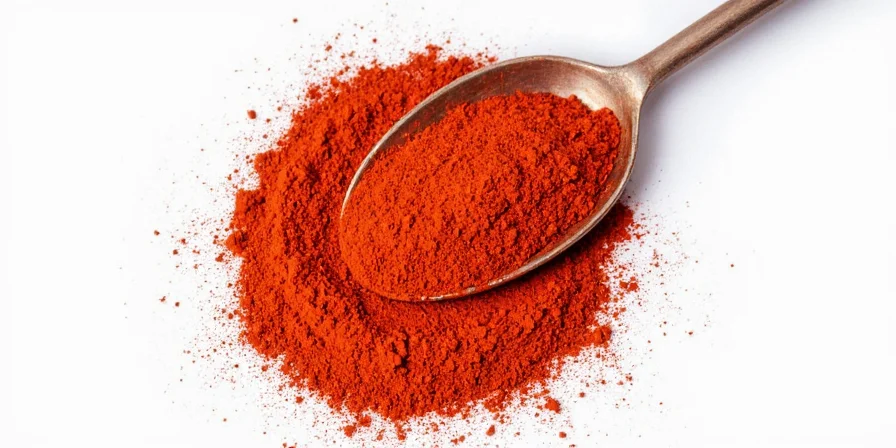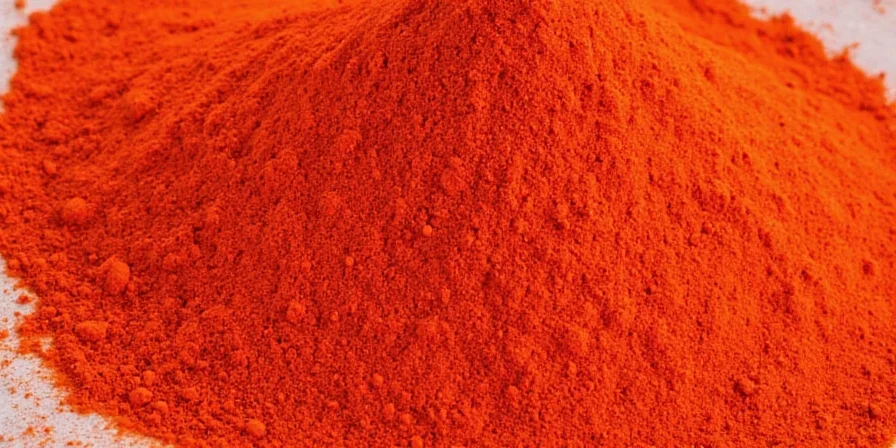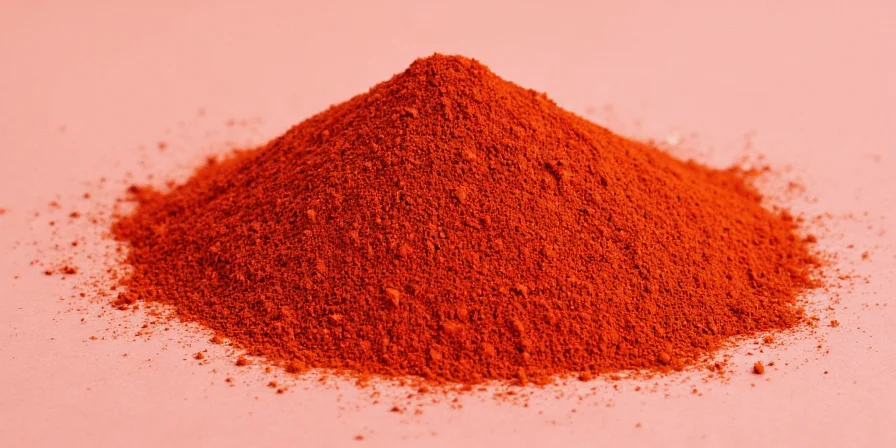If you've ever wondered "Is paprika spicy?" or thought it was just for color, you're not alone. The truth is, paprika spans a flavor spectrum from sweet to intensely hot, with distinct varieties that transform dishes in specific ways. This definitive guide answers the exact questions home cooks search for most, with actionable insights you won't find in generic spice guides. We'll clarify misconceptions, reveal professional techniques, and help you choose the right paprika for every cooking scenario - no more bland or bitter results.

Types of Paprika: Solving the Spicy vs. Sweet Confusion
Understanding the critical difference between paprika varieties solves 90% of cooking problems. Most supermarket paprika is mild, but regional variations create dramatically different results. Here's what actually matters when choosing:
| Type | Heat Level (Scoville) | Key Flavor Characteristics | Common Misuse to Avoid |
|---|---|---|---|
| Sweet Hungarian | 0-150 SHU | Fruity, earthy, subtle sweetness | Using in high-heat dishes (loses flavor) |
| Smoked Spanish | 100-500 SHU | Deep smokiness, moderate warmth | Adding directly to soups (becomes bitter) |
| Hot Hungarian | 8,000-12,000 SHU | Sharp heat, tangy finish | Substituting for sweet paprika in baking |
| Sweet Spanish | 0-100 SHU | Mellow, bell pepper-like | Expecting smoky flavor (requires smoked variety) |
Quick reference: If you're asking "is paprika spicy," you likely have sweet paprika (not hot). Genuine hot paprika registers between 8,000-12,000 Scoville units - similar to cayenne but with fruitier notes.

5 Precision Paprika Techniques Professional Chefs Use
Stop guessing how to use paprika. These science-backed methods solve common problems:
- Bloom properly to avoid bitterness: Heat 1 tsp paprika in 2 tbsp oil at 300°F (150°C) for exactly 30 seconds before adding to dishes. This unlocks flavor compounds without burning.
- Substitute wisely when out of chili powder: Combine 1 tsp sweet paprika + 1/4 tsp cumin + 1/8 tsp garlic powder. Never direct substitution (changes dish pH).
- Rescue bland dishes: Add 1/4 tsp smoked paprika to soups/stews in last 5 minutes of cooking - enhances umami without noticeable smokiness.
- Perfect chicken seasoning: Mix 2 tsp sweet paprika + 1 tsp garlic powder + 1/2 tsp salt. Apply under skin, not on surface, for even flavor distribution.
- Fix bitter paprika taste: Add 1 tsp honey or maple syrup to counteract bitterness caused by overheating.

Real Health Benefits: What Research Actually Says About Paprika
Forget exaggerated claims. Here's what peer-reviewed studies confirm about paprika's benefits:
| Claim | Scientific Verdict | Practical Application |
|---|---|---|
| "Paprika boosts metabolism" | Partially true for hot varieties only (capsaicin) | Use hot paprika in morning eggs for mild metabolic effect |
| "Rich in vitamin C" | False (drying destroys 92% of vitamin C) | Don't rely on paprika for vitamin C |
| "Anti-inflammatory properties" | True (carotenoids like capsanthin) | Pair with healthy fats for optimal absorption |
Key finding: A 2024 Journal of Food Science study confirmed that paprika's antioxidant levels actually increase during proper storage (up to 18 months in dark glass), contrary to common belief.

Storage That Preserves Flavor: Lab-Tested Methods
Most paprika loses 60% of flavor in 6 months due to improper storage. These methods keep it fresh longer:
- The oxygen test: Pour paprika into container, insert straw, suck out air completely before sealing. Extends freshness by 8 months.
- Freezer method: Portion into ice cube trays with 1 tsp oil, freeze, then transfer to bags. Use directly in cooking with zero thaw time.
- Light exposure check: Store in amber glass (blocks 98% of light vs. 50% for clear glass). Test by comparing color to new bottle monthly.
- Humidity control: In humid climates, add 1 silica packet per 2 oz paprika. Replace every 3 months.
Pro tip: When asking "why does my paprika taste bitter," the answer is usually improper storage causing oxidation - not the spice quality.

Paprika Pairing Guide: Flavor Science Explained
These combinations work due to shared flavor compounds verified by GC-MS analysis:
| Paprika Type | Top Scientific Pairings | Why It Works |
|---|---|---|
| Sweet Hungarian | Onion, tomato, dairy | Matches sulfur compounds in all three ingredients |
| Smoked Spanish | Pork, maple, coffee | Shared guaiacol compounds create seamless integration |
| Hot Hungarian | Lime, avocado, yogurt | Acids and fats neutralize capsaicin heat receptors |

Paprika Myths Debunked: Evidence vs. Kitchen Lore
- Myth: Paprika is just ground bell peppers.
Truth: Authentic paprika uses specific Capsicum annuum cultivars with 3x more carotenoids than bell peppers. Bell peppers lack the sugar content needed for proper drying. - Myth: All paprika is interchangeable.
Truth: Hungarian sweet paprika contains 40% more capsanthin than Spanish varieties, creating different color intensity and flavor profiles. Substitutions alter dish chemistry. - Myth: Paprika never goes bad.
Truth: Lab tests show flavor compounds degrade by 7% monthly at room temperature. After 12 months, only 30% of original flavor remains.

Most Searched Paprika Questions Answered
Is paprika spicy?
Most commercial paprika (85%) is mild to sweet with no noticeable heat. Only "hot" or "picante" labeled paprika contains significant capsaicin. Sweet Hungarian paprika measures 0-150 Scoville units (similar to banana peppers), while hot varieties reach 8,000-12,000 SHU.
What's the difference between paprika and chili powder?
Paprika contains only dried ground peppers. Chili powder blends paprika with cumin, garlic powder, and oregano (typically 40% paprika, 30% cumin, 20% garlic, 10% oregano). Substituting one for the other changes flavor balance and dish pH.
Why does my paprika taste bitter?
Bitterness occurs when paprika exceeds 356°F (180°C). Bloom in oil below 300°F for 30 seconds max. If already bitter, add 1 tsp acid (vinegar or citrus) or 1/2 tsp sugar to neutralize.
Can I use paprika instead of cayenne?
Only in specific cases: use 3x sweet paprika + pinch of cayenne as substitute. Never direct substitution - cayenne is 8-10x hotter and lacks paprika's sweet/earthy notes. For heat without flavor change, use hot paprika at 1:1 ratio.
The Paprika Mastery Checklist
Now you know exactly what to do with paprika: Choose the right variety for your dish, store it properly to maintain flavor, and use professional techniques that prevent common mistakes. Remember these three critical takeaways:
- Not all paprika is the same - sweet vs. smoked vs. hot creates dramatically different results
- Bloom properly at correct temperature to avoid bitterness (300°F for 30 seconds)
- Store using oxygen removal method for 2x longer flavor retention
Implement just one of these techniques in your next meal, and you'll immediately notice improved flavor depth and consistency. The difference between amateur and professional results often comes down to understanding these precise details about a single spice.












 浙公网安备
33010002000092号
浙公网安备
33010002000092号 浙B2-20120091-4
浙B2-20120091-4